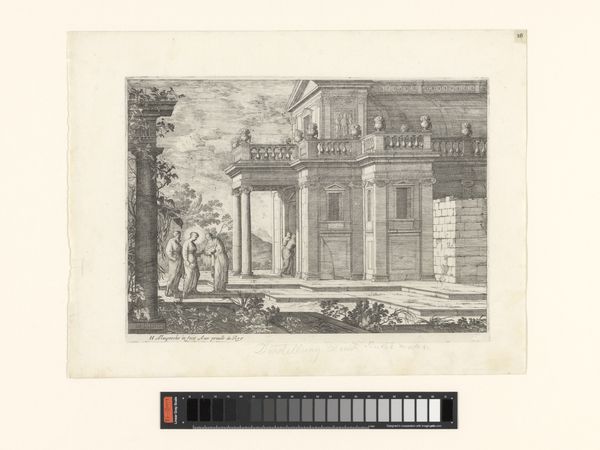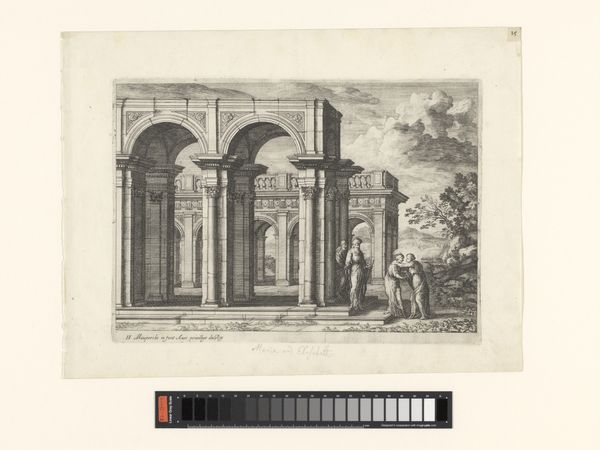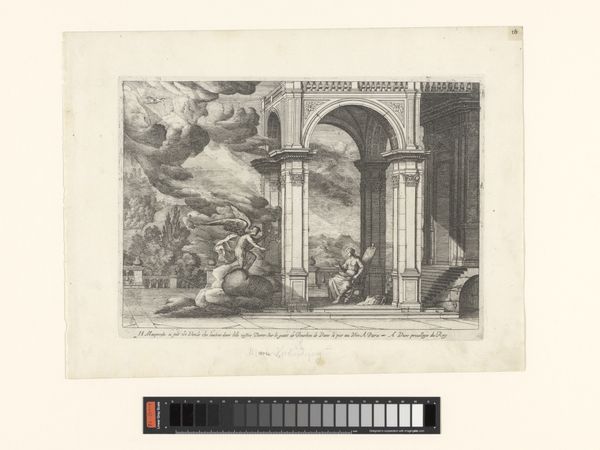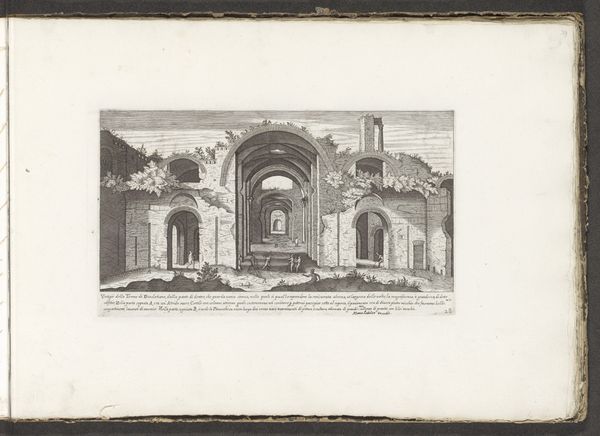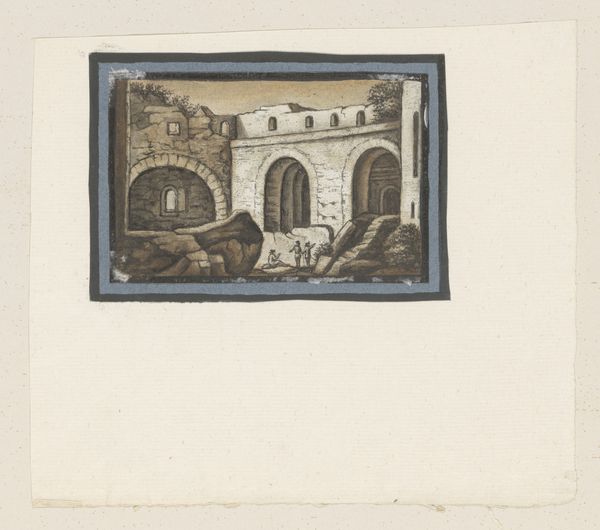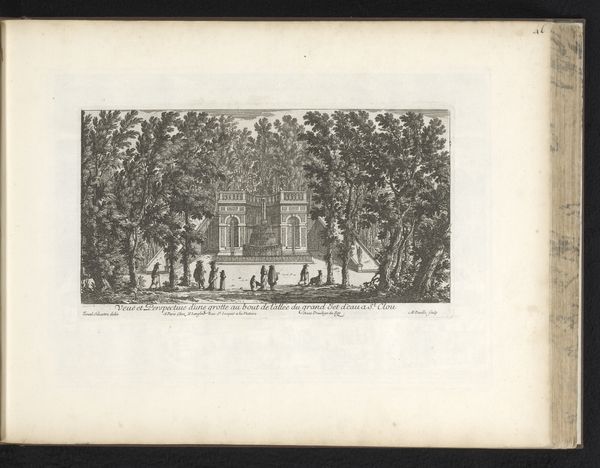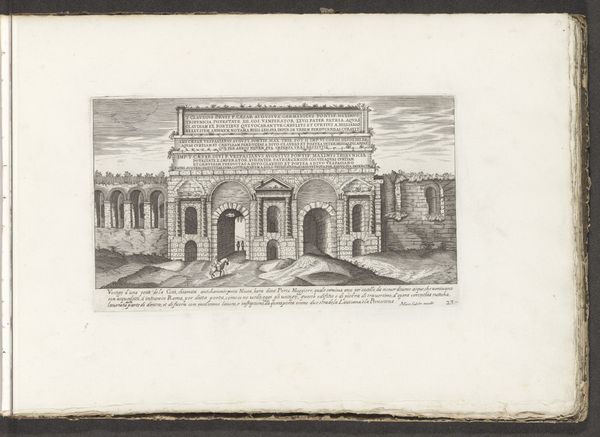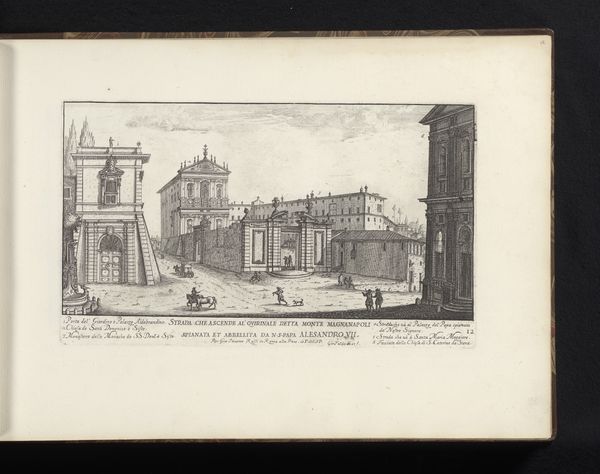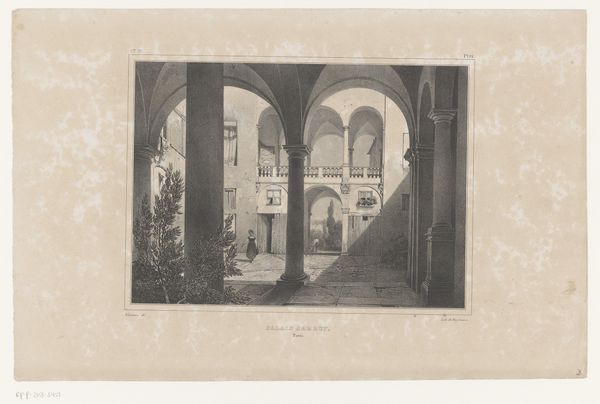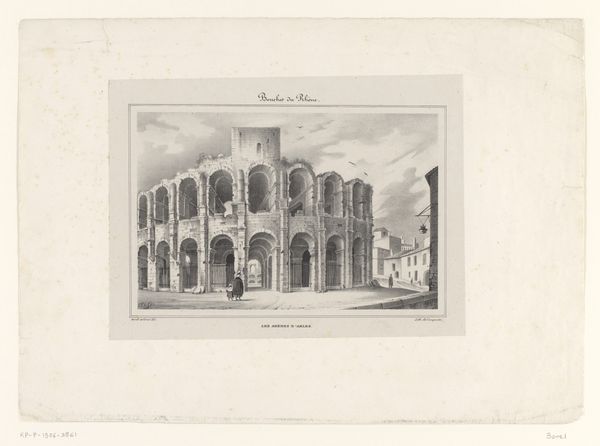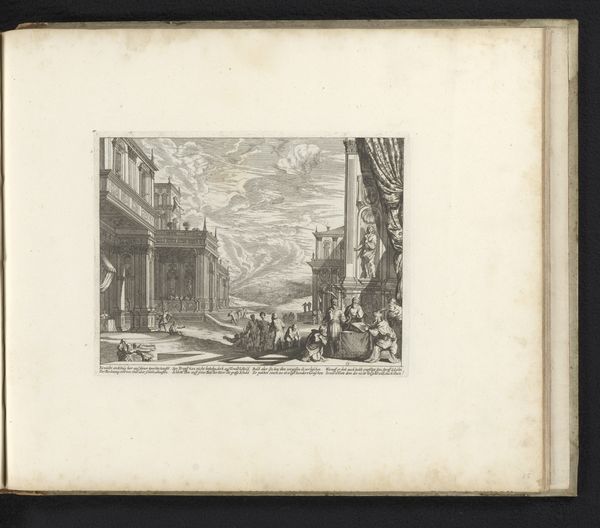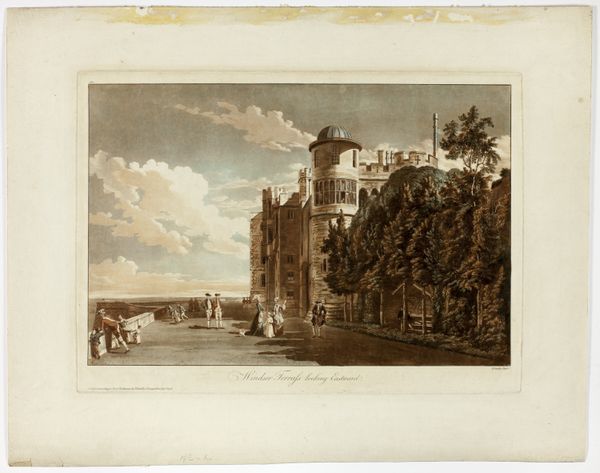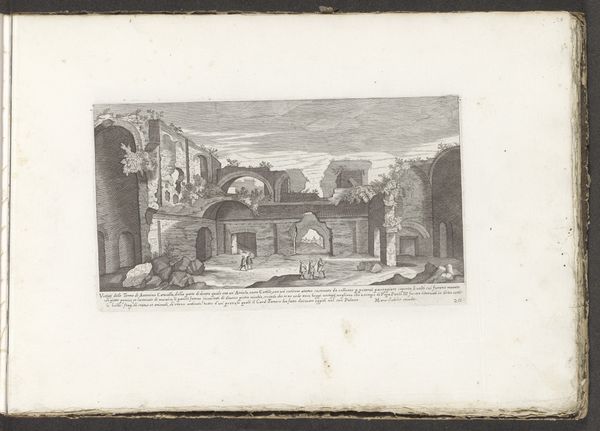
print, paper, engraving
#
baroque
#
ink paper printed
# print
#
landscape
#
figuration
#
paper
#
history-painting
#
engraving
Dimensions: height 295 mm, width 391 mm
Copyright: Rijks Museum: Open Domain
Curator: Allow me to draw your attention to "Adoration of the Shepherds," an engraving by Henri Mauperché, likely completed between 1639 and 1656. It's currently held in the Rijksmuseum's collection. Editor: Immediately, I’m struck by the stark contrast. The composition is dark, heavy, but something about the detailed architectural framework tries to lend it grace. Curator: Precisely. Note the complex interplay of line and form characteristic of the Baroque. Mauperché employs rigorous hatching and cross-hatching, which create depth and texture from a very limited tonal range, considering the medium of print on paper. The print depicts an intricate architectural scene in ruins; look to the arches, colonnades, and temple structures flanking the manger scene in the foreground. Editor: Yet the sacred story almost seems swallowed by this architectural spectacle. It looks more like an opera backdrop than the humble birthplace of Jesus. Consider the implications: is this elevation a way to align power or make it relatable? The shepherd figures, even in adoration, are hemmed in. I am not sure I read that positively given the traditional interpretation. Curator: That's a provocative point. Formally, one could argue that the theatrical staging enhances the divine drama. Note how Mauperché has arranged the shepherds, bathed in light, as if spotlighted on a stage. But, indeed, let us look to its historical construction. There is an argument to be made about the socio-cultural implications—a commentary on the church's power perhaps? Editor: Absolutely. Think about it—shepherds were society’s outcasts, lowest on the rungs. What does it mean when this scene is visually overwhelmed by grand buildings of societal hierarchy? Curator: A stimulating perspective! The work does engage in a compelling dialogue. Editor: Agreed. A valuable point of entry for audiences to begin understanding this art piece through its historical lenses and through its own visual story. Curator: And indeed for engaging with the work on its own, and the architecture’s, terms.
Comments
No comments
Be the first to comment and join the conversation on the ultimate creative platform.
